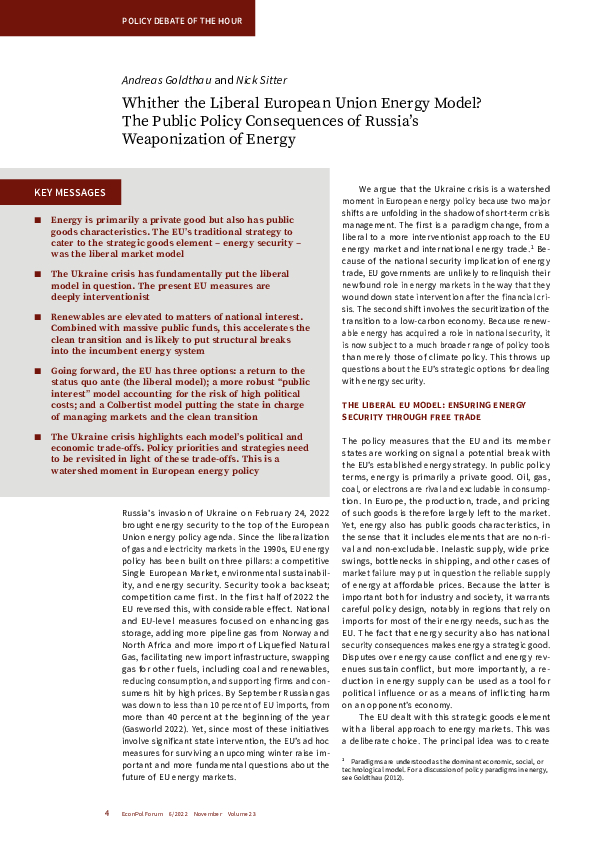Article in Journal
Whither the Liberal European Union Energy Model? The Public Policy Consequences of Russia’s Weaponization of Energy
Andreas Goldthau, Nick Sitter
CESifo, Munich, 2022
EconPol Forum 23 (6), 4-7
CESifo, Munich, 2022
EconPol Forum 23 (6), 4-7

- Energy is primarily a private good but also has public goods characteristics. The EU’s traditional strategy to cater to the strategic goods element – energy security – was the liberal market model
- The Ukraine crisis has fundamentally put the liberal model in question. The present EU measures are deeply interventionist
- Renewables are elevated to matters of national interest. Combined with massive public funds, this accelerates the clean transition and is likely to put structural breaks into the incumbent energy system
- Going forward, the EU has three options: a return to the status quo ante (the liberal model); a more robust “public interest” model accounting for the risk of high political costs; and a Colbertist model putting the state in charge of managing markets and the clean transition
- The Ukraine crisis highlights each model’s political and economic trade-offs. Policy priorities and strategies need to be revisited in light of these trade-offs. This is a watershed moment in European energy policy